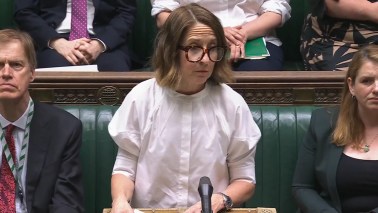
In the spring of 2006, Rachel Cusk and her husband decided to take their two small daughters out of school and spend three months, a season, exploring Italy. She felt too settled, too comfortable, and if her friends wondered at what seemed like a curse of restlessness, what frightened her more was the opposite, ‘knowing something in its entirety’, and coming to the end of that knowing. ‘Go we must’, she decided, and ‘go we would’.
Italy which had so pleased D. H. Lawrence, one of the writers and travellers she returns to on her journey — Italy, said Lawrence, was tender ‘like cooked macaroni — yards and yards of soft tenderness, ravelled round everything’ — seemed to offer the perfect mix of art and history. Cusk and her husband packed their car with books, clothes and a few games and toys, and set off across the Channel on a freezing spring dawn. From the first, she was extremely conscious of the need to blend in with her new surroundings, to ‘gain some foliage, some camouflage’.
They had one fixed destination, a house rented for a few weeks not far from Sansepolcro in Tuscany. For the rest, it was a question of wandering and discovering. Having crossed France, they entered Italy through the tunnels from Ventimiglia, paused in the Garfagnana, from where a whole community had once migrated to Scotland, visited Lucca, and drove around the quarried mountains of Carrara. Later they would stop in Assisi, Arezzo, Florence, and, in the growing heat of early summer, drive down to Rome, Naples and Pompeii. Sometimes they stayed in small hotels; sometimes they camped. The Last Supper is both an essay on the artists whose pictures they looked at, and a disquisition on the art of travelling itself. ‘I wish I knew better’, writes Cusk several times, in different words, ‘how to tell the difference between the good and the bad, the truth and the imitation. I wish I could learn how to read the structure of life as weathermen read the structure of clouds, where the future must be written, if you knew what to look for.’
The weeks settled in their house in Tuscany provided the family with a taste of expatriate life, as they found themselves drawn into tennis parties and meals in local trattorias by somewhat avid but helpful local settlers. ‘It is not fitting’, observes Cusk, ‘not what we have come for, to wallow in the murky tank of Englishness, feeding and drifting with our own kind in their glass prison’. They are not sorry to move on, though they were fortunate to have found a house so close to Piero della Francesca’s ‘Madonna del Parto’, in its new home in the old schoolroom of Monterchi. At every stage, and particularly during the many visits to art galleries, the children appear to have been extremely forbearing.
The black and white photographs, dropped into the pages, suit the text’s measured pace. They add to the feeling that Cusk’s Italy is a pleasingly old-fashioned country, and that it is still possible to avoid the ravages of mass tourism and Berlusconi and his many hectic and appalling television channels. Dense, sometimes too dense, too richly and precisely written, The Last Supper is like a series of perfectly lit scenes in a Dutch painting, every leaf and thatched roof minutely and delicately observed.





Comments